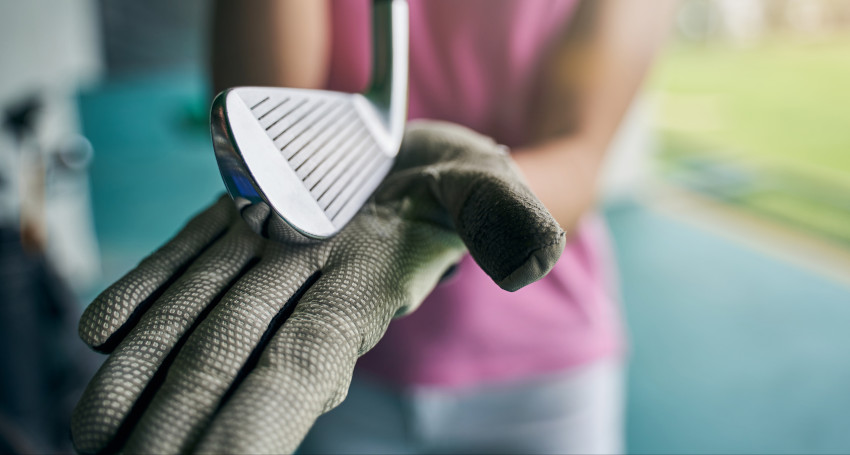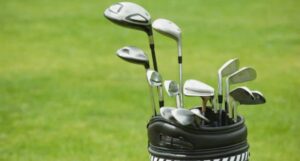Here at SwingFit we pride ourselves in our professionalism and record with golf club fitting and in this article we will go into the details of what does it actually mean and why it is essential for your golf game and to improve your next round!

Understanding Golf Club Fitting
Golf Club Fitting involves tailoring golf clubs to the specific swing characteristics and physical attributes of a player. This process is carried out by professional club fitters who use advanced technology and their expertise to adjust the club’s length, lie angle, shaft flex, grip size, and clubhead design. These modifications aim to optimize a player’s performance and consistency on the golf course, making golf club fitting an essential part of the sport. The process begins with a thorough evaluation of the player’s current golf clubs and swing. The club fitter observes the golf swing to determine the player’s swing speed, ball flight, and contact consistency. The player’s height, arm length, and hand size are also taken into consideration. This information is then used to determine the optimal specifications for the golf clubs, including shaft length, lie angle, and grip size. The club fitter then adjusts the golf clubs according to the determined specifications. This could involve altering the shaft length, adjusting the lie angle, or modifying the grip size. The player then tests the adjusted clubs, and the club fitter may make further adjustments based on the player’s feedback and observed performance.
What Does Golf Club Fitting Mean?
Golf Club Fitting is a process that customizes golf clubs to match a player’s specific swing characteristics and physical attributes. This is a critical aspect of the sports equipment industry, especially in the game of golf. It involves adjusting various elements of the golf club, including the shaft length, lie angle, and grip size, to optimize the player’s golf swing. The process begins with a thorough evaluation of the player’s current golf clubs and golf swing. The club fitter uses specialized technology and equipment to observe the player’s swing speed, ball flight, and contact consistency. The player’s height, arm length, and hand size are also considered. This information is then used to determine the optimal specifications for the golf clubs. The club fitter then adjusts the golf clubs according to these specifications. This could involve changing the shaft length, adjusting the lie angle, or modifying the grip size. The player then tests the adjusted clubs, and the club fitter may make further adjustments based on the player’s feedback and observed performance.
Why is Golf Club Fitting Essential?
Golf Club Fitting is essential for maximizing a player’s performance and consistency on the golf course. By customizing golf clubs to match a player’s specific swing characteristics and physical attributes, including player’s height, the player can achieve a more efficient and effective golf swing. This can lead to improved accuracy, distance, and consistency. Without proper golf club fitting, players may struggle with clubs that are not suited to their golf swing or physical attributes. This can result in poor performance and increased risk of injury. For example, a club with an incorrect shaft length or lie angle can cause the player to alter their swing, leading to inconsistent ball striking and potential strain on the body. Furthermore, golf club fitting can enhance the player’s comfort and confidence on the golf course. Playing with clubs that are customized to their specific needs can make the game more enjoyable and rewarding. Therefore, golf club fitting is not only essential for competitive players seeking to improve their performance, but also for recreational players seeking to enhance their enjoyment of the game.
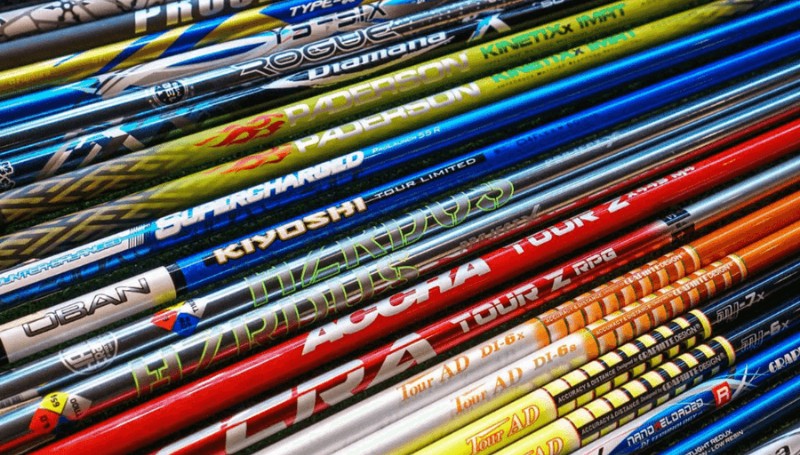
Key Aspects of Golf Club Fitting
Golf club fitting is a meticulous process in the realm of sports equipment, requiring the proficiency of a certified specialist. The first crucial aspect is the selection of the correct club length, determined by the player’s height, arm length, and unique characteristics of their golf swing. The club length, a significant factor in golf equipment, directly affects the player’s swing speed and the center of strike, thus influencing the trajectory and distance of the golf ball. The second aspect in golf club fitting is the clubhead design, which includes elements such as the raw face angle, loft, and moment of inertia. These factors play a pivotal role in a player’s golf swing, affecting the ball’s flight path and distance. The third aspect of golf club fitting involves the shaft length. The shaft length, like the club length, is determined based on the player’s height and swing characteristics, and significantly influences the golf ball’s trajectory and distance.
Center of Strike: Club Length and Raw Face Angle
The center of strike, a fundamental element in golf club fitting, refers to the point on the clubface where the ball makes contact. Achieving a consistent center of strike is pivotal for maximizing distance and accuracy in the golf swing. The club length and raw face angle are two factors that significantly affect the center of strike. The club length, a critical aspect of golf sports equipment, is typically determined based on the player’s height and arm length. A club that is too long can lead to off-center strikes, while a club that is too short can cause the golfer to hit the ball with the bottom of the clubface. The raw face angle, on the other hand, refers to the angle of the clubface at address. It can be adjusted in the club fitting process to aid golfers who tend to slice or hook the ball, thus optimizing their golf swing.
Dynamic Face Angle: Lie Angle and Diagnosing Shot Direction
The dynamic face angle, another critical aspect of golf club fitting, refers to the angle of the clubface at impact. This angle, influenced by the lie angle of the club, plays a significant role in the direction and accuracy of the golf swing. The lie angle is the angle between the shaft and the ground when the club is in a square position at address. An incorrect lie angle can cause the clubface to be open or closed at impact, leading to inaccurate shots. Diagnosing shot direction is an integral part of the club fitting process. By analyzing a golfer’s typical shot pattern, a certified club fitter can make necessary adjustments to the club’s specifications. For instance, if a golfer tends to slice the ball, the club fitter might recommend a more upright lie angle or a closed face angle. Conversely, if a golfer tends to hook the ball, the club fitter might suggest a flatter lie angle or an open face angle, thus enhancing the player’s golf swing.
Club Design Characteristics: Shaft Flex and Weight
In the realm of golf sports equipment, the shaft flex and weight are paramount design characteristics that directly influence the golf swing and, consequently, the trajectory and distance of the golf ball. The shaft flex, essentially the bendability of the golf club’s shaft, plays a significant role in the golf swing. A golf club with more flex can create a higher trajectory and increased distance, making it a suitable choice for players with a slower swing speed. On the other hand, a stiffer shaft, offering less flex, generates a lower, more controlled trajectory, often preferred by players with a higher swing speed. The weight of the shaft, another critical element in golf club design, can also impact a player’s golf swing. A lighter shaft can foster a faster swing speed, which can potentially increase the shot’s distance. However, a heavier shaft can provide more control and stability during the golf swing, particularly beneficial for golfers with a naturally fast swing speed. The interplay between shaft flex and weight is a crucial aspect of golf club design. Achieving the right balance can significantly enhance a player’s performance on the golf course. For instance, a golf club with a flexible, lightweight shaft might be ideal for a beginner golfer with a slow swing speed, while a golf club with a stiff, heavy shaft may be better suited to a professional golfer with a fast swing speed.
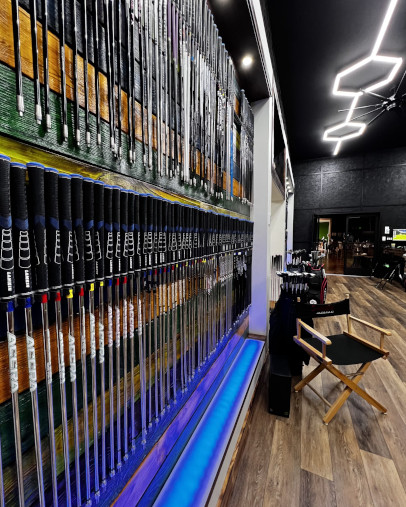
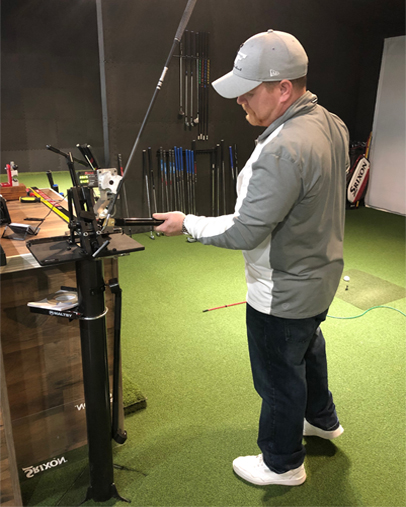
The Process of Golf Club Fitting
The process of golf club fitting, a crucial aspect of golf sports equipment selection, involves several steps, all aimed at ensuring that a player’s clubs are perfectly suited to their individual swing characteristics and physical attributes. The first stage of the club fitting process is the pre-fitting interview. During this stage, the fitter gathers vital information about the player, including their skill level, typical playing style, and any physical limitations that might affect their golf swing. Following the pre-fitting interview, the fitter conducts a static fitting. This involves measuring the player’s physical attributes, such as their player’s height, wrist-to-floor distance, and hand size. These measurements are used to determine the appropriate club length, lie angle, and grip size for the player. The static fitting is a crucial part of the club fitting process, as it ensures that the clubs are tailored to the player’s physical characteristics. The next stage of the club fitting process is the dynamic fitting. During this stage, the player hits balls with a variety of different clubs under the watchful eye of the fitter. The fitter assesses the player’s swing speed and ball flight characteristics, using this information to determine the optimal shaft flex and weight for the player.
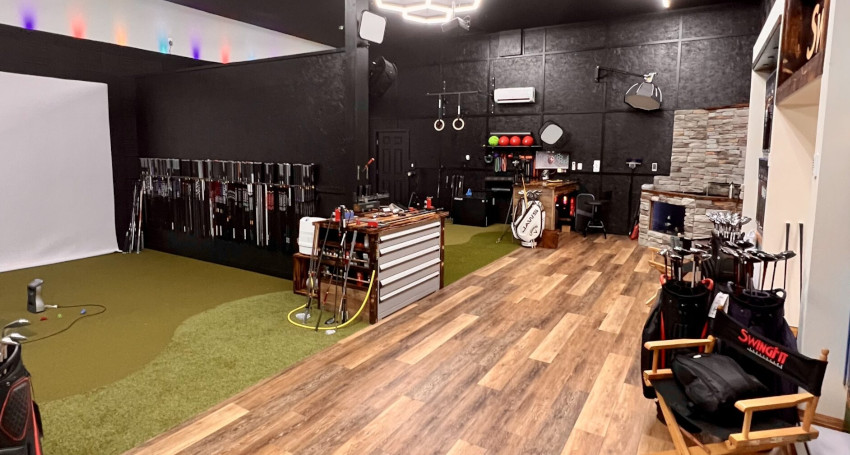
What to Expect from a Club Fitting?
During a club fitting, players should expect a comprehensive evaluation of their golf game. This includes an analysis of their golf swing mechanics, physical attributes, and playing style. The fitter uses specialized equipment to accurately measure various aspects of the player’s golf swing, including their swing speed, launch angle, and spin rate. Players will also have the opportunity to hit balls with a variety of different clubs. This provides valuable insight into how changes in club design can affect their performance. For instance, a player might find that they achieve a better ball flight with a club that has a stiffer shaft or a heavier clubhead. Following the club fitting, the fitter will make recommendations for club specifications that are tailored to the player’s individual needs and abilities. This might include adjustments to the shaft flex, weight, length, grip size, and clubhead design. The fitter will also provide a detailed explanation of their recommendations, helping the player to understand how each factor can influence their golf swing and overall performance.
Analyzing Your Golf Swing and Putting
In the realm of golf, analyzing your golf swing and putting style is pivotal. The golf swing, a complex motion involving multiple body parts, is fundamental to a player’s performance. A professional club fitting expert uses advanced technology to capture detailed metrics, such as swing speed and launch angle, to understand a player’s golf swing. This information, along with the player’s height and physical condition, forms the basis for the club fitting process. Putting analysis is another critical aspect of golf. The grip size, shaft length, and lie angle of the putter play a significant role in a successful putt. A professional club fitter assesses all these factors to ensure that the putter is a perfect match for the player’s height and putting style. This meticulous analysis can lead to improved accuracy and lower scores in golf. Continuous analysis of a player’s golf swing and putting is essential. As a player’s height, physical condition, or golf swing style changes, so too should their sports equipment. Regular swing and putting analysis ensures that the golf clubs remain a perfect fit, contributing to optimal performance and preventing potential injuries.
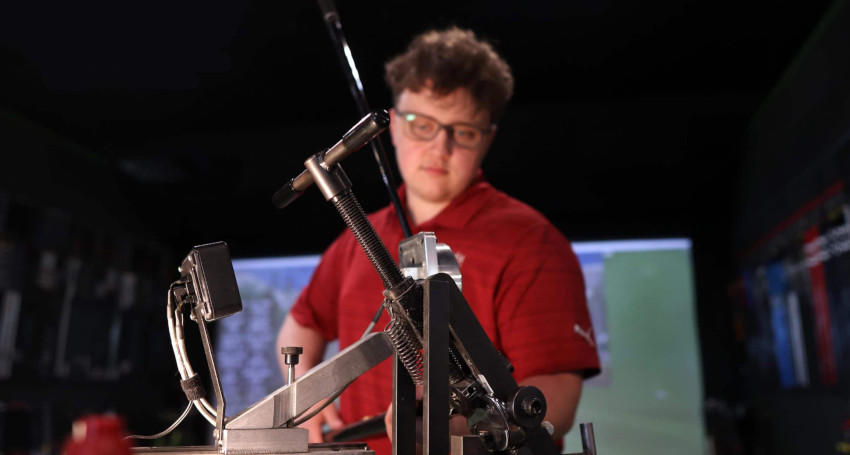
Creating and Hitting with Your Ideal Clubs
The creation of ideal golf clubs starts with the data collected during the golf swing and putting analysis. The clubhead, shaft length, grip size, and other components are selected based on the player’s unique swing characteristics. The aim of this club fitting process is to optimize the player’s performance by maximizing distance, accuracy, and consistency in their golf swing. Once the golf clubs are assembled, the player has an opportunity to test them. This step is crucial as it allows the player to experience the feel of the clubs and observe their performance. The club fitter will analyze the player’s shots, paying close attention to the ball’s trajectory, spin, and distance. Any necessary adjustments to the loft or lie angle are made at this stage to ensure the clubs are perfectly tailored to the player’s golf swing. The creation and testing of ideal golf clubs is not a static process. As a player’s golf swing evolves, their sports equipment may need to be adjusted or replaced. Regular check-ins with a club fitter can ensure the golf clubs continue to enhance the player’s performance and contribute positively to their game.
The Impact of Professional Club Fitting
Professional club fitting can have a dramatic impact on a golfer’s game. Custom-fitted sports equipment can enhance a player’s golf swing, leading to longer, more accurate shots and lower scores. The right golf clubs, tailored to a player’s height and swing speed, can also boost their confidence on the course. Beyond improving performance, professional club fitting can prevent injuries. Using golf clubs that are the right shaft length, grip size, and lie angle for a player’s height and golf swing can reduce strain and discomfort. This underscores the importance of professional club fitting in ensuring a natural, efficient golf swing. Professional club fitting offers a personalized experience. The fitter takes into account the player’s height, physical attributes, golf swing, and playing style to create golf clubs that are uniquely theirs. This personalized approach ensures that players get the most out of their sports equipment, enabling them to play their best golf.
Why Should You See a Professional Club Fitter?
Seeing a professional club fitter is crucial for any golfer seeking to improve their game. A club fitter’s expertise and use of specialized equipment enable them to accurately assess a player’s golf swing, leading to the creation of perfectly fitted sports equipment. This can result in significant improvements in a player’s golf swing, including increased distance, improved accuracy, and greater consistency. In addition to creating custom golf clubs, a professional club fitter can provide valuable advice and guidance. They can help players understand the intricacies of sports equipment design and how different components, such as grip size, shaft length, loft, and lie angle, can affect their golf swing. This knowledge can empower players to make informed decisions about their sports equipment. Investing in professional club fitting is an investment in a player’s golfing future. The right golf clubs, tailored to a player’s height and golf swing, can last for many years and continue to benefit their game as it evolves. By ensuring that their sports equipment is perfectly fitted to them, players can maximize their potential and get the most out of their investment.
Do Swing Changes Have an Effect?
The golf swing, a significant aspect of the sport, is a complex mechanism influenced by a multitude of factors. Alterations in the golf swing, even minor ones, can significantly impact the trajectory and distance of the golf ball. For instance, a simple change in grip size can modify the clubface’s orientation at impact, causing a shift in the ball’s flight path. Similarly, modifications in a player’s stance or posture can influence the swing plane, which in turn affects the trajectory and distance of the ball. In the realm of golf, consistency is key. However, changes in the golf swing can disrupt a player’s rhythm and timing, leading to inconsistent results. Some golf swing changes can bring about immediate improvements, while others may necessitate a period of adjustment. Therefore, understanding the effect of swing speed changes can be pivotal in enhancing a player’s performance. Furthermore, swing changes can have physical implications. Altering the golf swing mechanics can change the forces exerted on the body, affecting the risk of injury. Therefore, when contemplating swing changes, it is crucial to consider the potential physical effects. Consulting with a golf professional or a physical therapist to ensure that swing changes are biomechanically sound and safe is highly recommended.
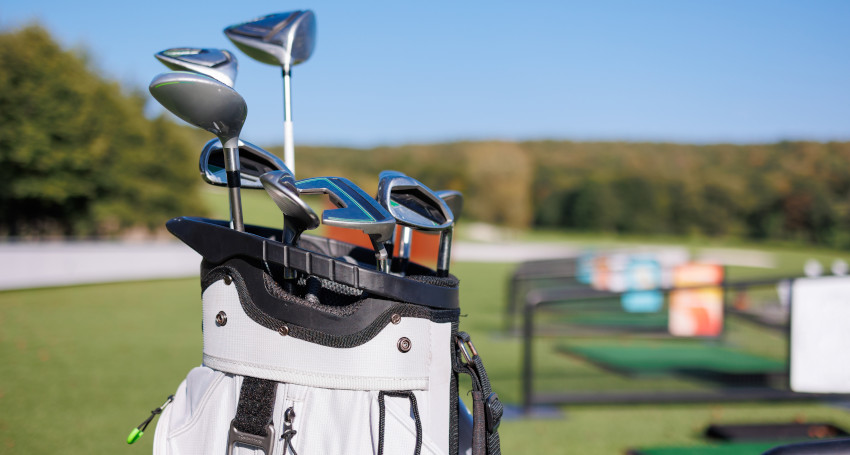
The Debate: Custom Fitting vs Standard Clubs
The golf community has long debated the merits of custom fitting versus standard clubs. Custom fitting tailors the golf clubs to the individual’s specific physical characteristics, like the player’s height, swing mechanics, and playing style. Conversely, standard clubs, a common type of sports equipment, are mass-produced to cater to a broad range of golfers. Supporters of custom fitting argue that it enhances performance by optimizing the club’s specifications, such as shaft length, loft, lie angle, and grip size, to match the golfer’s unique requirements. This personalized approach can potentially improve the golfer’s comfort, confidence, and consistency, leading to better scores. In contrast, proponents of standard clubs argue that they are adequate for most golfers. They contend that the majority of golfers can achieve satisfactory performance with standard clubs, provided they select the right club for their skill level and playing style. Furthermore, standard clubs are typically more affordable and readily available than custom-fitted clubs.
Should You Get Your Golf Clubs Custom Fitted?
The decision to get golf clubs custom fitted is a personal one and depends on several factors. For serious golfers looking to maximize their performance, custom fitting may be a worthwhile consideration. Custom fitting fine-tunes the clubs to the golfer’s specific requirements, which can enhance comfort, confidence, and consistency on the golf course. However, custom fitting may not be necessary for all golfers. Casual golfers or beginners may find standard clubs to be sufficient. Standard clubs are generally more affordable and can provide adequate performance for recreational play. Moreover, beginners may not yet have a consistent swing, making it challenging to fit them accurately. The cost and availability of custom fitting is another critical factor to consider. Custom fitting can be expensive and may not be available in all areas. Therefore, it is crucial to weigh the potential benefits against the cost and feasibility of custom fitting. Consulting with a certified club fitter to discuss your options and make an informed decision is recommended.
Pros and Cons of Getting Fitted As A Golfer
The process of getting fitted as a golfer in the sports equipment industry involves adjusting the golf club’s grip size, shaft length, lie angle, and loft to match the player’s height and golf swing characteristics. The primary advantage of this club fitting process is that it can significantly enhance a golfer’s performance. A golf club tailored to a player’s specific swing speed and physical attributes can lead to more accurate shots and a more consistent golf swing. However, the sports equipment industry’s club fitting process has its drawbacks. One significant disadvantage is the cost associated with the custom golf fitting process. The process involves multiple sessions with a certified club fitter, who uses state-of-the-art technology to analyze the golfer’s swing speed, grip size, shaft length, and lie angle. The cost of this process, combined with the higher price of a custom-fitted golf club, can be prohibitive for some players. Despite these potential drawbacks, the benefits of a custom-fitted golf club generally outweigh the disadvantages for most players. As golfers improve their skills and become more serious about the game, they often find that a fitted club is a worthwhile investment. The sports equipment industry continues to innovate, making the club fitting process more accessible and affordable.

Where to Get Custom Golf Fitting
Many golf store retailers in the sports equipment industry offer custom golf fitting services by the are often persuaded by bonuses and other incentives to provide clients with certain brands and manufacturers without truely taking into account the needs of the client.
If you want true club fitting, an independent, brand agnostic club fitter like SwingFit is key. SwingFit are professional golf club fitters and use advanced technology to measure factors like swing speed, grip size, shaft length, lie angle, and loft. Based on these measurements, they can recommend the ideal golf club specifications for each player’s height and golf swing.
Another option is to visit a specific golf club manufacturer’s fitting center. These centers often have a wider range of clubs from their brand to try out, and their fitters have in-depth knowledge of that particular brand’s products.
Some golf courses and driving ranges also offer custom fitting services. These venues provide the advantage of being able to test the clubs in a real-world setting. They also often have professionals on hand who can provide lessons and advice on improving your golf swing.
Scheduling Your Fitting
When scheduling your golf fitting, there are several factors to consider. First, you should plan on the process taking several hours. This includes time for the fitter to analyze your golf swing and physical attributes, for you to try out different clubs, and for the fitter to make adjustments based on your feedback. Next, consider the time of day. If you’re a morning golfer, schedule your fitting in the morning when you’re at your best. Likewise, if you typically play in the afternoon, schedule your fitting for that time. This will ensure that the fitting is as accurate as possible. Finally, make sure to book your fitting well in advance, especially during peak golf season. Fitting slots can fill up quickly, and you don’t want to miss out on the opportunity to improve your game.
Contacting SwingFit
Reaching out and contacting SwingFit to get your optimum golf fitting process is easy. You can contact us through the website, via email – g.mailbox@swingfit.net or telephone – 304-568-3408
